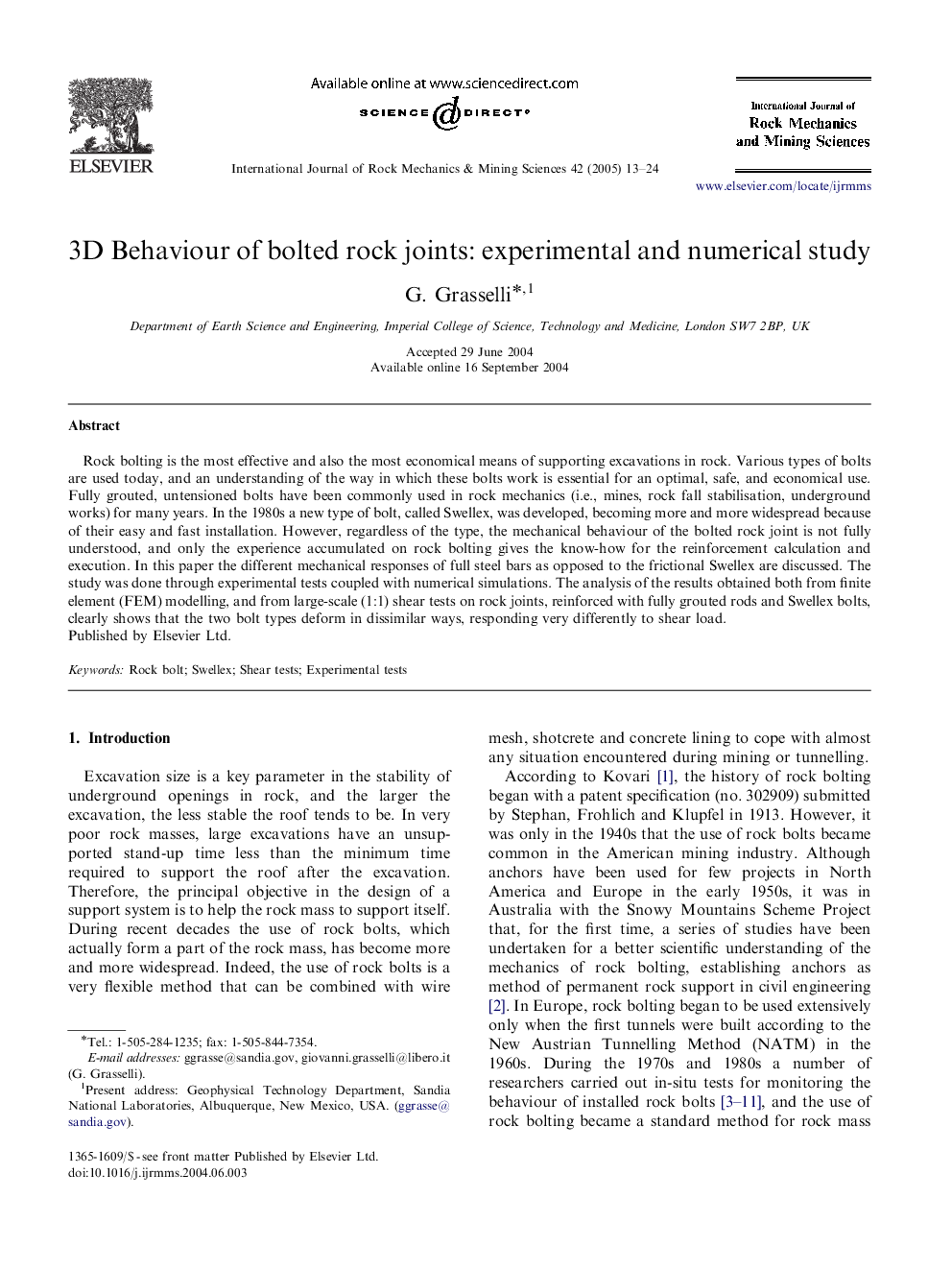| Article ID | Journal | Published Year | Pages | File Type |
|---|---|---|---|---|
| 9716510 | International Journal of Rock Mechanics and Mining Sciences | 2005 | 12 Pages |
Abstract
Rock bolting is the most effective and also the most economical means of supporting excavations in rock. Various types of bolts are used today, and an understanding of the way in which these bolts work is essential for an optimal, safe, and economical use. Fully grouted, untensioned bolts have been commonly used in rock mechanics (i.e., mines, rock fall stabilisation, underground works) for many years. In the 1980s a new type of bolt, called Swellex, was developed, becoming more and more widespread because of their easy and fast installation. However, regardless of the type, the mechanical behaviour of the bolted rock joint is not fully understood, and only the experience accumulated on rock bolting gives the know-how for the reinforcement calculation and execution. In this paper the different mechanical responses of full steel bars as opposed to the frictional Swellex are discussed. The study was done through experimental tests coupled with numerical simulations. The analysis of the results obtained both from finite element (FEM) modelling, and from large-scale (1:1) shear tests on rock joints, reinforced with fully grouted rods and Swellex bolts, clearly shows that the two bolt types deform in dissimilar ways, responding very differently to shear load.
Related Topics
Physical Sciences and Engineering
Earth and Planetary Sciences
Geotechnical Engineering and Engineering Geology
Authors
G. Grasselli,
